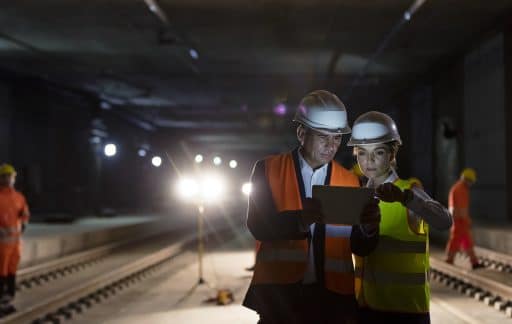In Switzerland, the ETAVIS company installed a redundant uninterrupted power supply system to secure train traffic and ensure continuity of service.

An outage can have serious and even catastrophic consequences in some activity sectors. Hospitals very early on addressed this risk by acquiring generators to ensure that power is continuously supplied, even in the event of an outage. Other solutions, collectively grouped under the heading Uninterrupted Power Supply (UPS), use a number of different technologies to temporarily store electricity that can be made available to the system in the event of an outage. Computer rooms have “their own” UPS, as do railway networks.
In the case of railway networks, the operating complexity of infrastructure that is coordinated and regulated by information flows increases the need to protect the system from the power outages that can block thousands of passengers, as happened in Zurich in 2015 and Paris in July 2017.
Redundant power supply
In Herisau, Switzerland, the southeast railway operations centre decided to back up its system by providing a redundant power supply. Christoph Preisig, project manager at ETAVIS Grossenbacher, the VINCI Energies electrotechnical subsidiary that installed the equipment, describes how it works:
“Now If the local grid experiences an outage, the railway grid immediately takes over.”
“Previously, if there was an outage in the local grid, the uninterrupted power supply system was immediately switched on. However, it only supplied power for a limited period of time. With the new system, the facilities are supplied by both the ordinary local grid and the separate railway grid, so that if the local grid experiences an outage, the railway grid immediately takes over, and we do not have to immediately resort to the UPS system.” If the railway grid experiences an outage, says Christoph Preisig, a set of batteries also enables the railway systems to continue operating over a certain amount of time.
Two challenges
To set up the redundant system, ETAVIS worked under special conditions because the cables had to be pulled alongside the tracks without interrupting train traffic. Dressed in orange clothing from top to toe, the specially trained workers were protected by a lookout in charge of warning them when a train was approaching as they installed and wired the new distributors and the new uninterrupted supply systems.
The second challenge for ETAVIS, says the project manager, was to complete the switchover from the old UPS system to the new one overnight the day before D-Day, without a hitch. The project bodes well for the Swiss railway network’s reliability, now that the redundant supply ensures continuity of service.
15/01/2018


